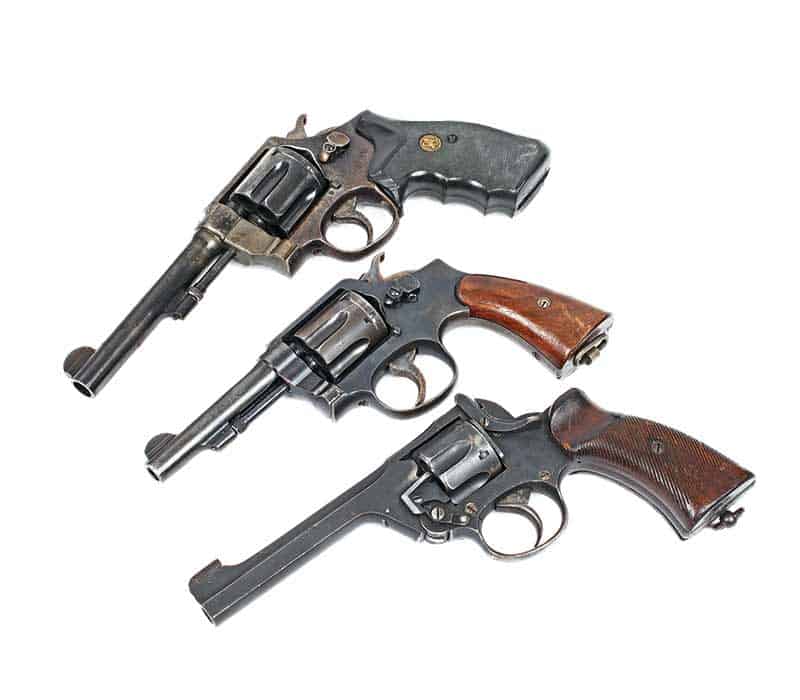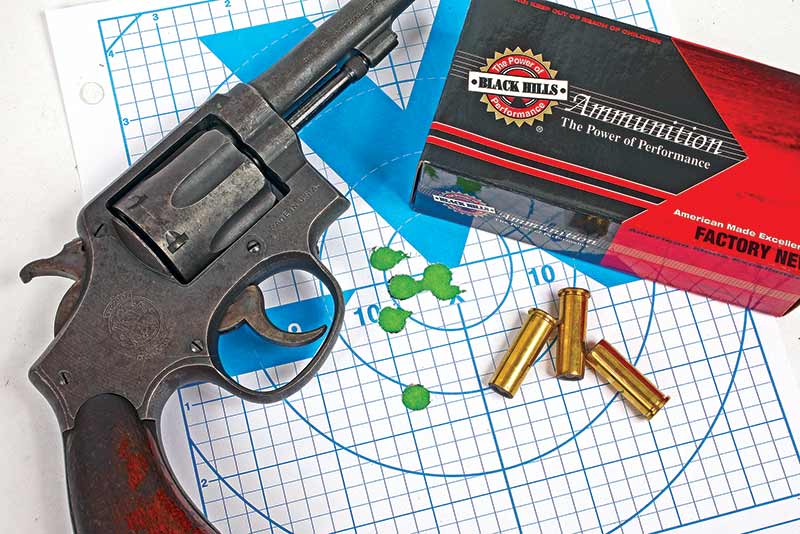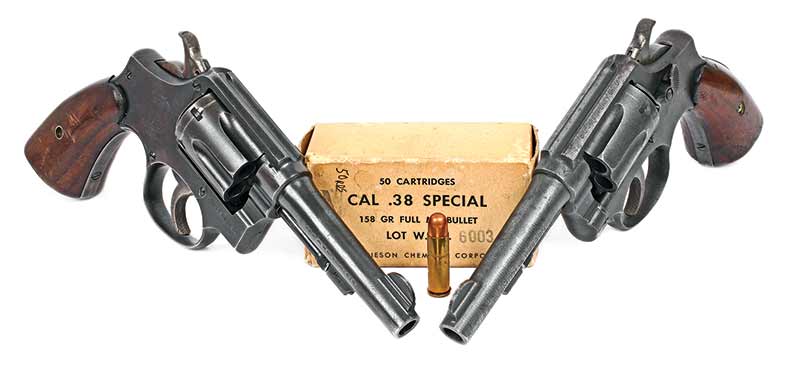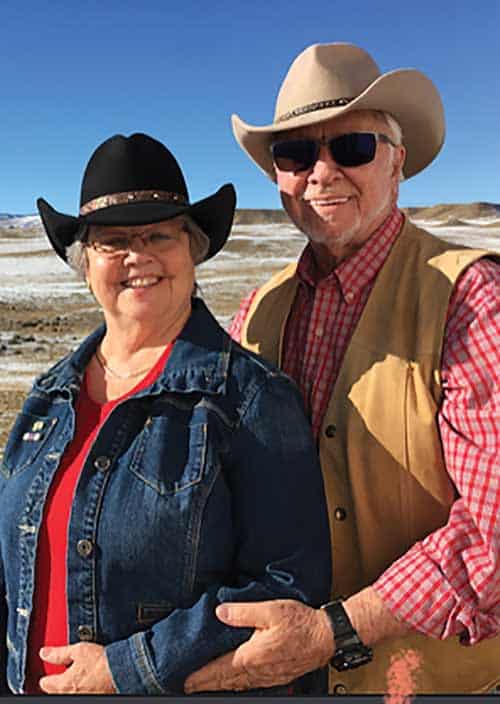It’s the beginning of WWII, we’ve had our face slapped at Pearl, and virtually the entire world will soon be engulfed in a struggle to fight the warmongers and get some sanity — and freedom — back. While politicians yammered, pounded chests and pointed fingers, there were those who realized this was turning into a toe-to-toe fight where bayonets and pistols would be bloodied.
And we weren’t ready for it. Not even close.
Things changed fast as time seemed to rocket by. As suddenly as Nazi tanks stormed through Europe, Banzai charges trampled Asia and bombers struck Honolulu, the U.S. and its allies were faced with sending millions of troops worldwide to face-off the threats. Industry ramped up — fast — and it was soon realized there weren’t enough 1911s to go around. The old 1917 revolvers were dusted off yet the numbers were still far short. Smith & Wesson responded with a “Hand Ejector” .38 S&W Special revolver to fill the holsters of soldiers, sailors, airmen, guards, allies, insurgents — and even some spies.
Available at first in 4″, 5″ and 6″ barreled versions, the gun proved light, handy, effective and universally popular. Almost 850,000 were made, including hundreds of thousands in .38 S&W for the allies. The finishes went from “commercial” blue to a sand-blast blue to Parkerized — with the “Wartime Finish” noted by the maker lest anyone think they’d slumped to a new low in quality. This revolver fought back in the hands of pilots, factory security, in the jungles, forests, deserts and in the back-pockets of spy-catchers in a 2″ version.
It was called the “Victory” model for good reason, and the bold “V” before the serial number let anyone seeing it know what it was for. This game was final, total Victory — or no win at all.

The Victory (center) was lighter and handier than the 1917 S&W (top) and soon
found favor with anyone needing a handy side arm. The 1940-era Enfield in .38 S&W
(lower) was Britain’s way of answering the need for a mass-produced revolver but Roy
feels the S&W Victory is easier to operate and more accurate.
Historical Legacies
My dad was a Navy man, joining in 1952. I recall men I used to meet on his ships, at duty stations or who visited us. Men who had all fought in WWII. To my 10-year-old eyes, they were almost mythical. They’d “been there” and “seen that” many times. Things I’d only seen in old war movies — but they’d lived it. I remember my dad was often very respectful of certain gentlemen, and he’d later carefully explain who they were and what they had done “in the war.”
A life-long memory for me arrived the day one of them showed me his “old S&W” as he called it. We were at his home and he knew I was a gun-crazy kid but understood about the war, and how to be safe around guns. He brought it out, unwrapped the oiled rag, and before me lay the first Victory model I had ever seen. I recall the glow of the old incandescent light on the brushed blue finish and the tarnish on the old brass cartridges he took out of the cylinder. He smiled, let me handle it, then loaded it and returned it to its safe place.
Later, my dad told me the man had fought in the Pacific in WWII and had used the gun in earnest. I felt changed having handled it. I got a bit older that night.
As time passed, I’ve always been attracted to Victory models and I can’t hold one without trying to listen to its story. They all talk, some more quietly than others, but they all have stories. It may just be about walking the perimeter of an aircraft factory — or time in a P-51 as the pilot tried to outsmart a Focke Wulf 190 in the skies over Germany. But they talk.
Two Now
I have a pair of Victory models right now. Both have good stories. I bought them from the men who carried them — one in WWII and one in Vietnam. They sold them to me because they knew I cared, and still do. The Victory was long-lived in our armed forces and uses were found for them for decades after WWII. I predict some are still hiding in lockers or duffels around the world. My blued one helped protect a PT boat crewman in the South Pacific in WWII. The Parkerized one — showing some honest wear — rode in a Jeep quite a bit in Vietnam and, according to the soldier, “Made me feel a lot safer at times.”
I shoot them now and again and enjoy it every time I do. The small grips and sharp edges of the top-strap bite some, and after a couple of cylinders I stop. But that old S&W long action is smooth, predictable and familiar and I always smile. After 80-odd years, they still work, are still accurate and could be relied upon to protect a lonely guard, a 19-year-old tank commander or a G.I. in a foxhole on Iwo Jima.
Find a Victory model if you can — and listen to its story.
Our Friend Gwen
You might not have ever seen Gwen’s name on the masthead of our magazines, but for years now, she’s turned her sharp eye toward finding any pesky mistakes in our pages before going to press. Gwen’s title was “Grammar Guru” and she was all that — and more.
I first met Gwen when she was production director of our police association newspaper, The Informant, almost 40 years ago. I soon became the editor there during my police career, and for 15 or so years, Gwen and I were part of a team running that award-winning newspaper. When I heard Gwen had retired I snapped her up to handle proofing for us and she proved her mettle time after time, instantly becoming part of our FMG team and well-liked by all.
Alas, Gwen, and her kind-hearted husband Joe, passed unexpectedly in August from COVID, within one week of one another. We all miss Gwen’s ready-willingness to lend a hand, her amazingly sharp eye when it came to proofing and her unfailingly positive outlook. She and Joe were two of the nicest, kindest and sheer decent people I’ve ever known. Darn it all anyway.


